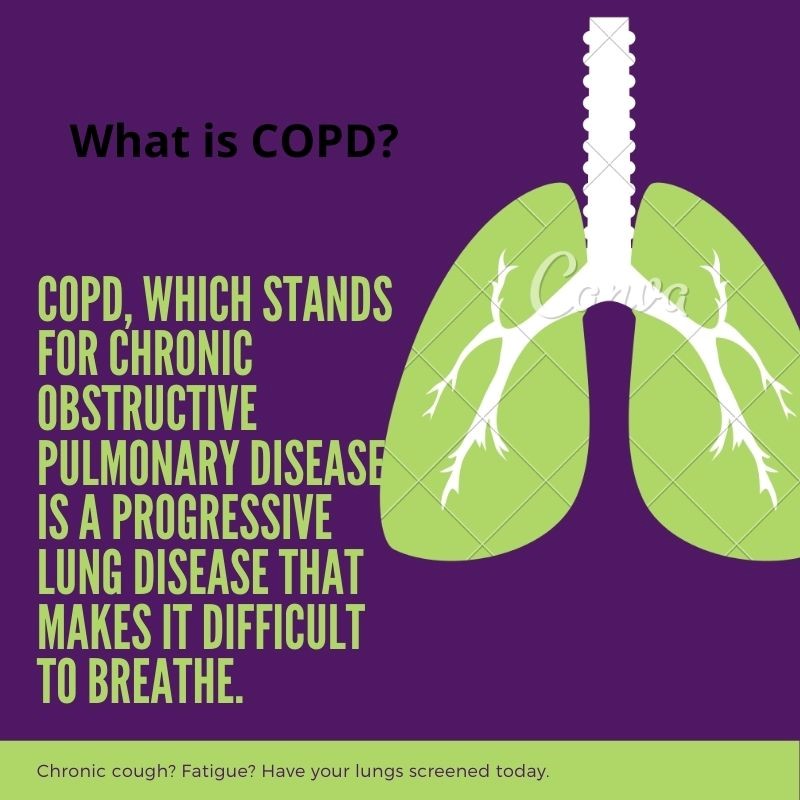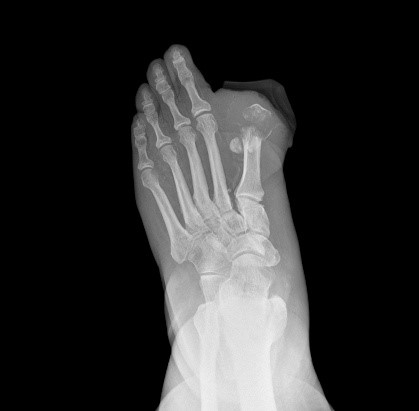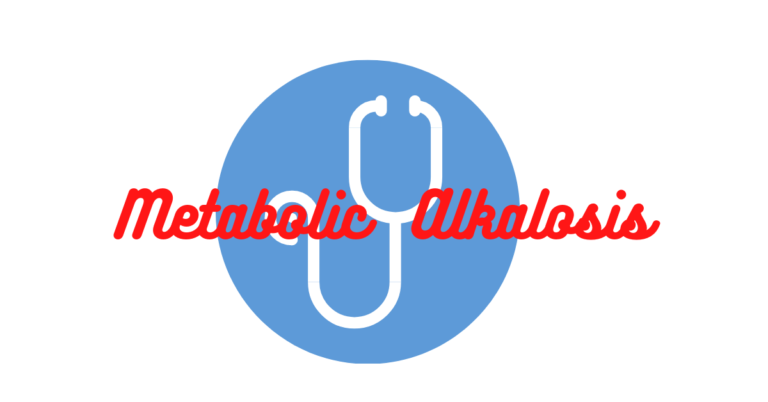Nursing Diagnosis and Care Plan for COPD- A Student’s Guide
Introduction
COPD is a chronic disease that affects the lungs and airways. It causes problems with breathing, making it difficult to do activities like work or exercise. The diagnosis of COPD can be challenging because symptoms come on slowly over time and are often mistaken for other conditions such as asthma, bronchitis, or pneumonia.
This post will provide a nursing diagnosis for COPD and suggest care plans for patients with this condition. As you read, keep in mind that our top nursing writers are ready to help in case you get stuck with your nursing assignment. All you need to do is place an order with us!
Disclaimer: The information presented in this article is not medical advice; it is meant to act as a quick guide to nursing students, for learning purposes only, and should not be applied without an approved physician’s consent. Please consult a registered doctor in case you’re looking for medical advice.
What is COPD?
COPD, which stands for chronic obstructive pulmonary disease, is a progressive lung disease that makes it difficult to breathe. The medical definition of COPD includes chronic bronchitis and emphysema.
Chronic bronchitis (CB) refers to inflammation and irritation of the air passages in your lung. People with CB cough up mucus, often have a chest cold and may develop pneumonia or infection of the lungs because they are coughing more frequently.
There are two other important COPD terms to know.
Emphysema happens when the tissues in your lungs lose their elasticity and do not expand or contract well. They are stiff, with large air-filled pockets between them that can’t be used for breathing. This makes it harder to breathe and limits how much oxygen can travel between your lungs and the rest of your body. It may cause an out-of-breath feeling even when you’re resting.
Chronic obstructive pulmonary disease (COPD) includes both CB and emphysema. There are three other common symptoms of COPD: shortness of breath, wheezing and repeated chest infections. How often these happen depends on the severity of the disease.


What Causes COPD?
Most of the time, COPD is caused by tobacco smoking (cigarette smoking). For some people, COPD runs in their families. It’s also common among people who work in dusty jobs, such as farming, construction, or manufacturing.
COPD usually develops slowly and worsens over time, sometimes causing serious problems like respiratory failure and death. But it can be managed with proper treatment.


What Are Signs and Symptoms of COPD?
The symptoms of COPD include;
– Wheezing
– Coughing,
-Shortness of breath
-Chest tightness
– Fatigue and weakness
-Frequent colds
–Nausea and vomiting.
These symptoms get worse over time and limit what you can do. The more advanced your COPD is, the more problems it will cause.
Some people with chronic obstructive pulmonary disease (COPD) have coughing spells that bring up mucus and yellow or greenish phlegm called sputum. They may also experience shortness of breath, which can increase with activity or worsen at night. As COPD worsens, it could cause chest tightness, fatigue and weakness, nausea, and vomiting.
What Does A Good Nursing Diagnosis for COPD Entail?
To diagnose COPD in a patient, many symptoms must be present over an extended period. These include chronic cough, sputum production, shortness of breath on exertion or rest, wheezing on breathing out when lying down flat (respiratory rate > 25\bpm), and an abnormal chest x-ray or pulmonary function test.
What Are Some Nursing Diagnosis for COPD?
2. Respiratory infection
3. Fatigue
5. Sleep disturbance related to dyspnea or discomfort
6. Deficient knowledge (patient, family) regarding condition, treatment, and self-care strategies (Including information about home management of COPD)
7. Impaired physical mobility


What Are the Interventions for These Nursing diagnoses?
1. Activity intolerance
Nursing interventions for activity intolerance include: Providing the patient with information about their disease. This helps them to understand what they are going through and how to manage their condition better. Another intervention is providing opportunities for exercise as much as possible, especially when patients have no symptoms. If the patient cannot take sufficient exercise while retaining the same level of physical function, other non-pharmacological interventions should be used; these include encouraging relaxation methods such as yoga or meditation. You may also involve a physiotherapist to give a suitable exercise program for the patient.
Exercise therapy effectively improves lung function and vegetative symptoms such as shortness of breath, tiredness or fatigue, anxiety, and depression; it also improves the quality of life through an improved ability to carry out essential activities in your daily life.
2. Respiratory infection
Respiratory infections are prevalent in patients with chronic obstructive pulmonary disease (COPD), and they are an important cause of exacerbations. Patients who have respiratory infections should be assessed for the need to receive antibiotics, which usually gives symptomatic relief; if this is not possible, then the patient will benefit from being admitted. The use of prophylactic antibiotics during exacerbations is not recommended as this may promote antibiotic resistance and intestinal colonization with resistant bacteria.
COPD patients should be educated on the importance of respiratory hygiene to prevent and treat infections. Implementing supportive airway clearance therapy such as chest physiotherapy, incentive spirometry, or bi-level positive airway pressure can also help these cases.
3. Alteration in gas exchange
Chronic obstructive pulmonary disease (COPD) causes impairment of oxygen and carbon dioxide transport between the alveoli and atmosphere due to the destruction of the pulmonary parenchymal. It also causes a reduction of vital capacity due to loss of elastic recoil from the lungs; this reduces blood oxygen content and increases the work of breathing. Oxygenation of the blood may be compromised. You should carefully assess the respiratory rate, pulse oximetry, and arterial oxygen saturation. This allows you to identify those patients with an increased risk for developing hypoxemia.
The patient will generally require supplemental oxygen therapy during acute exacerbations of COPD or during exercise to decrease dyspnea and improve exercise capacity. It is also essential to ensure the correct oxygen flow rate, as too high a concentration of oxygen may result in hypercarbia and loss of consciousness (due to respiratory alkalosis).
Patients with COPD are at risk for developing pulmonary edema during acute exacerbations, so it is recommended to check their vital signs every half hour to detect quick changes. In case of acute respiratory distress, the patient should be placed in a lateral position with 30-degree head-up tilt; also recommended is administering oxygen, treating hypoxemia or hypercarbia, and providing supplemental humidification to maintain average humidity of the airways.
4. Activity intolerance (Continued from Point 1)
Definition: Decrease in function during regular daily activities that interfere with independent living.
Explanation: Activities of daily living are activities that people usually do in their own homes without assistance from others, such as cleaning, cooking, walking, shopping, and travelling. The inability to perform these essential tasks (determined by a trained evaluator such as a physical therapist) is manifested through symptoms like fatigue (two or more days per week), shortness of breath with walking less than one block, and dyspnea activities. COPD patients have problems performing basic daily tasks since they require frequent rest periods to manage dyspnea. This can cause negative psychological consequences, so it is crucial to provide adequate support and education to continue independent living.
Exacerbations of COPD often cause deterioration in patients’ functional abilities due to associated symptoms like fatigue, anorexia, nausea, and pain. This results in decreased oxygenation (through exercise intolerance) and worse pulmonary function test outcomes (reduction in maximum voluntary ventilation, reduced vital capacity, and total lung capacity). Physical activity is an essential factor to improve patients’ ability to perform daily tasks; therefore, it is recommended to encourage physical activities, especially during exacerbations.
5. Dyspnea
Definition: Uncomfortable sensations of breathing are usually described as shortness of breath, sometimes accompanied by feelings of tightness or oppression in the chest; dyspnea is a subjective experience that varies according to the intensity, frequency, location, and duration of the work of breathing.
Explanation: This symptom is present in the vast majority of COPD patients, with a prevalence of about 90%. Dyspnea worsens over time due to progressive loss of lung function, resulting in increased respiratory effort and decreased exercise tolerance. These factors cause limitations in physical activity. Symptoms are usually relieved at rest, so resting dyspnea is a common complaint among patients and their families. It is not unusual that COPD patients to report suffering from different types of dyspnea such as exertional, paroxysmal nocturnal, orthopnea, and productive cough (especially with pulmonary infections). All these symptoms can be associated with the level and degree of severity of the disease.
Dyspnea should be described using the Medical Research Council scale, which rates severity on a 10-point scale (0=no dyspnea; 10=severe dyspnea).
6. Deficient Knowledge
Definition: Lack of understanding of the disease and its treatment.
Explanation: This factor is present in all patients, especially those who do not perceive their illness as a chronic situation because they have been diagnosed at an advanced stage. Patients with good knowledge are more likely to comply with medical recommendations, including medication adherence and follow-up appointments. The physician needs to provide this information to make informed decisions about their illness and its treatment; thus, leading to better health outcomes.
7. Impaired Physical Mobility
Definition: Patients have difficulty performing basic daily tasks due to functional limitations and reduced exercise tolerance.
Explanation: Problems arising from physical restrictions can be grouped into the following categories:
1) Patients who are unable to independently perform activities of daily living (ADLs) like bathing, dressing, or eating;
2) Patients who are limited in their ability to perform activities of greater demand (ADLs plus instrumental ADLs like preparing meals or driving a car);
3) Patients who are unable to participate in recreational and social activities due to exercise intolerance, which results in limitations for walking and climbing stairs;
4) Patients who have reduced functional independence because they need help with tasks that were previously performed independently due to respiratory symptoms or limitations caused by comorbidities.
Patients who suffer limitations in their functional status are at risk of developing social isolation and depression, hurting their quality of life. Impaired role performance may also lead to missed workdays or job changes due to physical limitations and difficulty performing ADLs.
8. Night cough
Definition: It is described as waking up during sleep due to coughing, regardless of whether this is associated with increased sputum production or not. The cough is usually dry and persistent, even after sleep; it can be due to an increase in the frequency and intensity of episodes of nocturnal dyspnea.
Explanation: This symptom can cause poor sleep quality, resulting in reduced oxygenation due to the disturbance in sleep patterns. This may lead to an increase in daytime somnolence levels and a reduction of physical activity during waking periods which can negatively affect the quality of life. This symptom is associated with smoking since smokers are more likely to experience respiratory symptoms at night than non-smokers. Heavy smoking is a significant risk factor for headaches, which has been associated with sleep disorders and fatigue in COPD.
You may also check interventions for Colostomy
Nursing Diagnosis Impaired Gas Exchange
(Impaired Ventilatory Pattern)
This may be related to the disease or other factors such as respiratory muscle fatigue, movement of mucus in airways, use of medications that are potent bronchodilators or adverse side effects. Minimal symptoms necessitate minimal intervention, but when present, they include:
- Dyspnea (labored breathing)
- Dyspnea on exertion -worsening symptoms at night
- Tachypnea -wheezing -respiratory failure
- Fever – this may indicate an infection such as pneumonia.
Check our other guides on the nursing diagnosis for Anxiety
What is a Nursing Care Plan?
A nursing care plan is a document that provides an outline for planning the interventions necessary to meet the goals of care. These plans are often written by a registered nurse (RN) or other qualified healthcare professionals. They will generally include more in-depth information such as specific, measurable objectives with mechanisms that nurses can use to ensure that each goal has been met in a quantifiable way. If you are sensitive to detailed medical terminology, you should consult with a professional healthcare provider to complete the entire care plan within your field of expertise and needs assessment for each specific patient population.
Analysis: Intensive pulmonary rehabilitation program (IPR) has been shown to decrease mortality by as much as 20% and increase FEV1 by 10%.
COPD Nursing Care Plan for In-Patient Hospital
Immediate Post-operative Period (0-7 Days)
-Intubation, mechanical ventilation, and a high dose of IV steroids may change the prognosis for worsening from a CPA to AECOPD.
Due to potential complications that could develop following surgery, such as pulmonary edema, COPD exacerbations are especially common in the immediate postoperative period. These exacerbations may or may not be associated with infection (pneumonia).
-Pre-existing comorbidities such as heart failure, diabetes, and emphysema are the strongest predictors of post-surgical complications in COPD patients
–Post-operative status can also be predicted by preoperative oxygen saturation and PaCO2 levels
-To improve oxygenation, nurses might need to:
Provide supplemental oxygen via nasal cannula or facemask. Passive ventilation is suggested in pulmonary edema due to high doses of IV steroids (that may cause pulmonary edema).
Administer steroid therapy for the treatment of pulmonary edema due to high doses of IV steroids
Assist in chest physiotherapy for the treatment of pulmonary atelectasis (collapsed lung)
-Supplemental oxygen in a chronic obstructive pulmonary disease (COPD) patient will right-shift the oxyhemoglobin curve allowing more oxygen saturation. Still, it should be noted that oxygen is not adequate on arterial carbon dioxide tension.
Note: Supplemental oxygen for COPD patients is considered controversial and not recommended unless the PaO2 falls below 50 mmHg.
-Assess respiratory rate, depth of breaths, skin color for evidence of cyanosis or pallor (whiteness), bounding pulses, strength in arms and legs
-Monitor pulmonary function tests: arterial blood gases, chest X-ray, arterial blood pressure monitoring
Usual postoperative course within the first 24 hrs:
-Patients intubated and mechanically ventilated will require invasive hemodynamic monitoring such as Swan Ganz catheters or pulmonary artery catheters. These patients need to be monitored closely for signs of cardiac failure.
-Intubated and mechanically ventilated patients are weaned off of the ventilator first and then extubated within 24-48 hours after surgery, depending on the type of surgery.
COPD Nursing Care Plan During Discharge
The purpose of this care plan is to facilitate the identification, reversal, or prevention of dyspnea in patients with COPD by utilizing planned interventions based on an individual’s goals, values, and preferences.
The steps to implement in preparing for discharge from the hospital are:
1. Teaching family members about home care, activities of daily living (ADLs), respiratory treatments, e.g., oxygen therapy, etc.
2. Advise patient on proper medication use, including inhaler techniques
3. Teaching patients and family members about the dangers of COPD exacerbations and how to recognize them (i.e., FEV1 decreases or respiratory secretions increase).
4. Patients with underlying medical problems such as diabetes, heart disorders, etc. must be brought up-to-date on proper treatment plans, including any new medication routines
5. Patients who are smokers and have the chronic obstructive pulmonary disease (COPD) must be encouraged to quit smoking and relocate outside to increase their overall health.
You may check our article on nursing leadership styles to learn about your strengths and better equip you for the process of care plan development
Rehabilitation and Coaching Steps for Patients Who Need Respiratory Therapy
Rehabilitation and Coaching Steps for Patients who need respiratory therapy include:
1. Use incentive spirometer as frequently as possible– Exhaled volume should reach 150-200% of the capacity when relaxed
2. Use a thermal blanket for warm-ups and cooldowns to relax muscles
3. Increase activities of daily living (ADL) and avoid inactivity
4. Use a compression device on the legs when sleeping
5. Keep current with medical appointments
6. Always keep inhalers at the bedside
7. Never skip medication day or dosage
8. Avoid acute illness
9. Exercise regularly
10. Avoid triggers for acute attacks
11. Do not smoke or allow smoking in the house
12. Identify activities that cause problems and don’t do them 13. Stay away from people with colds, flu
14. Women should avoid infections by keeping well covered 15. Use a humidifier
16. Eat a salt-free diet
17. Keep airways free of secretions
18. Use a room with warm/cool air
19. Keep chest and shoulders raised
20. Use oxygen as directed
21. Maintain a sleep schedule
Standard Components that are Included in Patient Care Plans:
- General information about the patient, including their name, date of birth, and social security number;
2. History of present illness (HPI), which includes where they were when the COPD symptoms started, any previous lung diseases they may have had; if they’ve been hospitalized for this condition in the past, what treatments they’ve had and how effective each one was;
3. Review of systems (ROS), which is a list of all their body’s major organ systems and functions (this is where you check off that all their vital signs are normal);
4. Presenting problem(s) and diagnosis, which is where you go through everything the patient told you about their symptoms;
5. Objective data such as chest x-ray films and pulmonary function test results;
6. Plan of care and interventions, which involves the treatment a patient received after being diagnosed with COPD in addition to recommendations made by their doctors;
7. Outcome of care, which is usually a check-off grid to rate the effectiveness of the intervention they received;
8. Reassessment and progress notes, these detail any changes in a patient’s condition during their stay in hospital;
9. Legal information such as informed consent forms, ethics committee review forms, and documentation that a patient has declined to have their care plan altered;
10. Patient education: This is information about what COPD is, how it affects the body’s organs, and why they need to follow their treatment plans. (This usually includes the most common questions they will need to be answered to understand where they stand with their condition).
You may check care plans for appendicitis
Treatment of COPD Emphasizes…
Treatment includes the use of bronchodilators, such as inhaled albuterol or levalbuterol and ipratropium bromide, administered by a metered-dose inhaler. There is some evidence of benefit from uncontrolled maintenance therapy with inhaled corticosteroids.
Exercise training (called “exercise rehabilitation”) can improve symptoms, fitness levels, and quality of life for people with COPD.
Other treatments may involve oxygen therapy, such as bronchodilators (to open up air passages) or steroids (to reduce inflammation). Other treatments may also be needed for short periods when acute exacerbations occur. Generally, the treatment plan is adjusted based on the severity of the patient’s condition and complications that may arise.
You may also check the treatment for metabolic alkalosis to increase your nursing knowledge!
Conclusion
COPD is a chronic lung disease that causes airflow obstruction, and the main symptoms are shortness of breath, cough with phlegm, wheezing, or whistling sounds when breathing. Patients can also experience chest tightness and excessive sputum production.
The nursing diagnosis for this condition is impaired gas exchange related to respiratory dysfunction with compromised health status.
A care plan would include providing information about coping skills for patients with COPD, including education on the disease process and self-management skills to maintain their quality of life.
Lastly, you may expand your knowledge on the nursing philosophy by checking our other article on nursing meta paradigms, or you can check nursing research topics to get a strong but easy-to-implement topic for your next nursing/psychology essay/research paper/thesis. Also, if you want our top writers to handle your assignment due to reasons such as a busy schedule, click the “Write my Nursing Assignment” button below and follow the simple steps.







